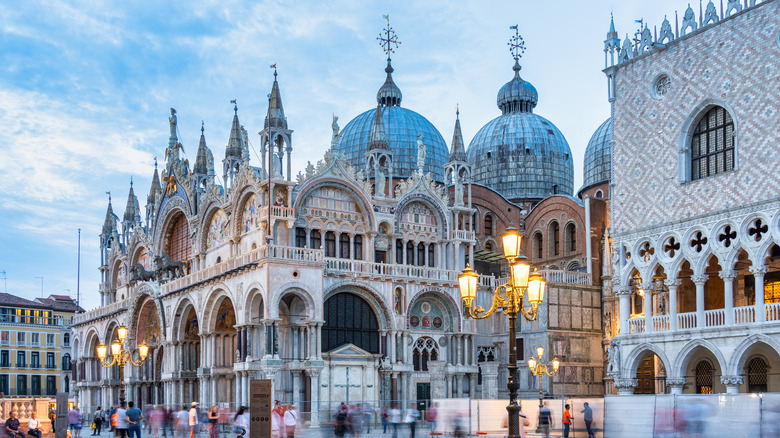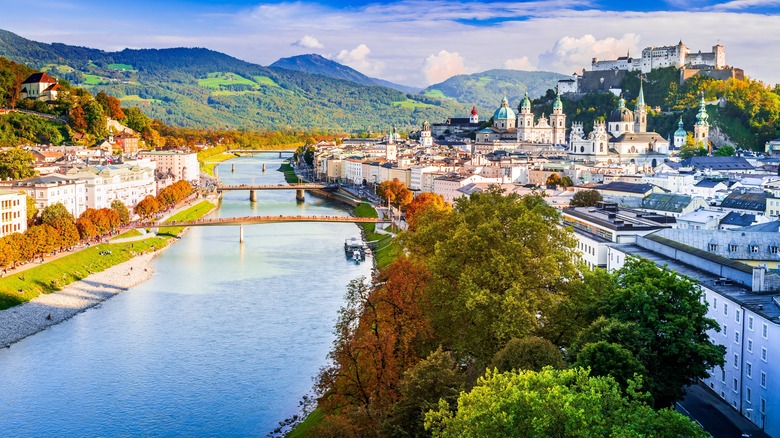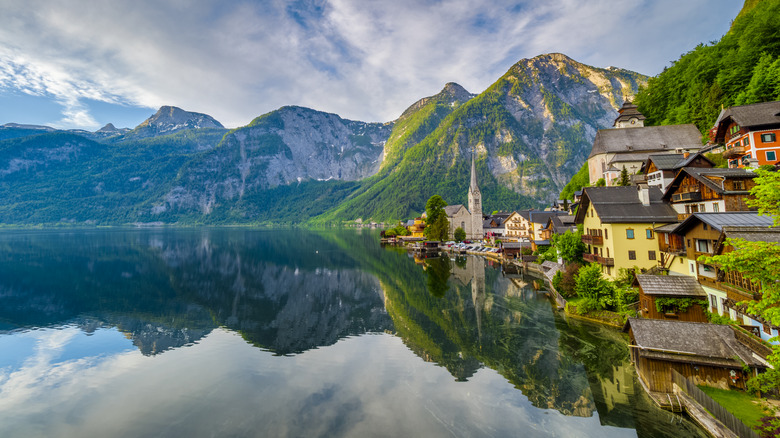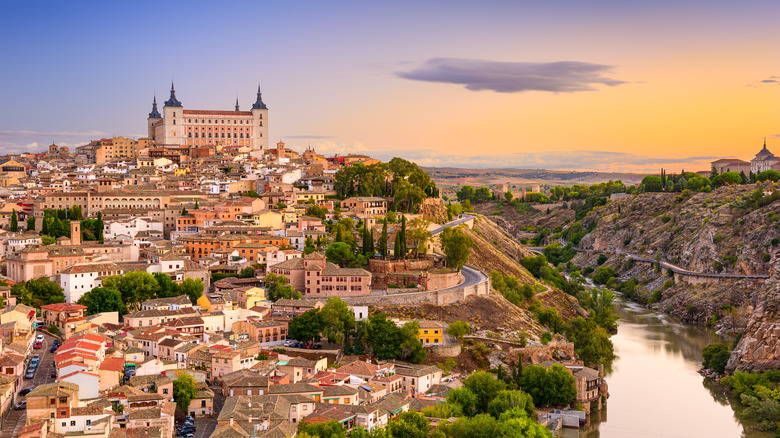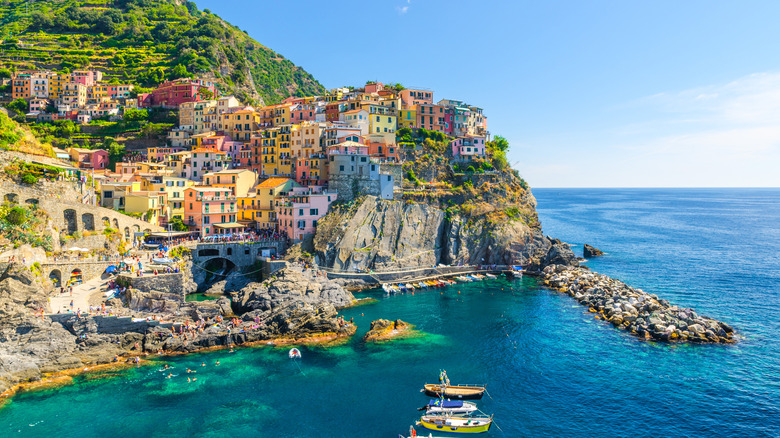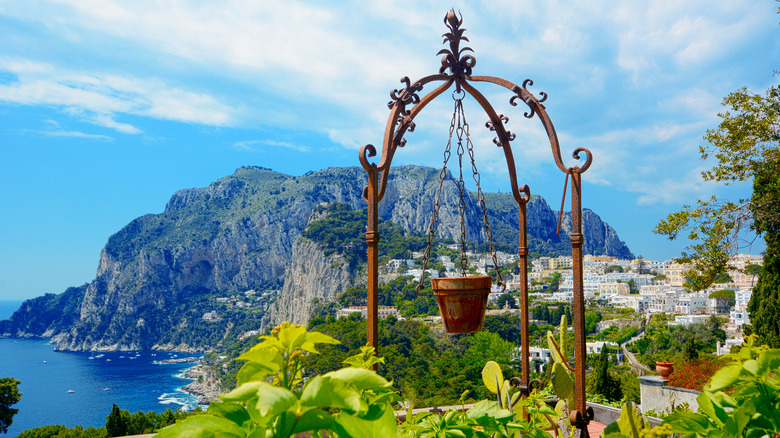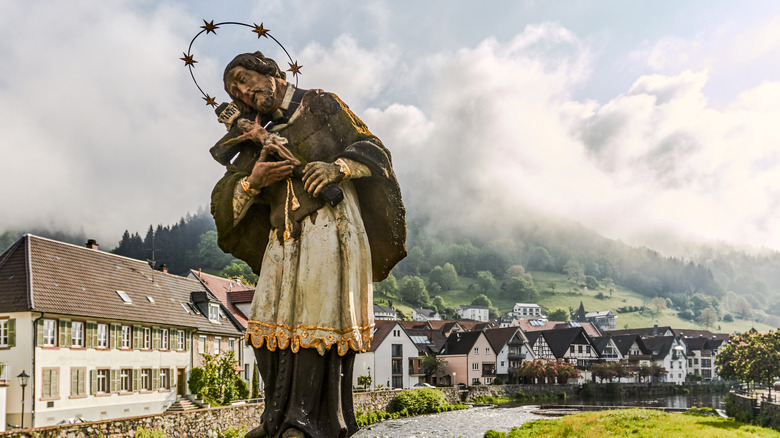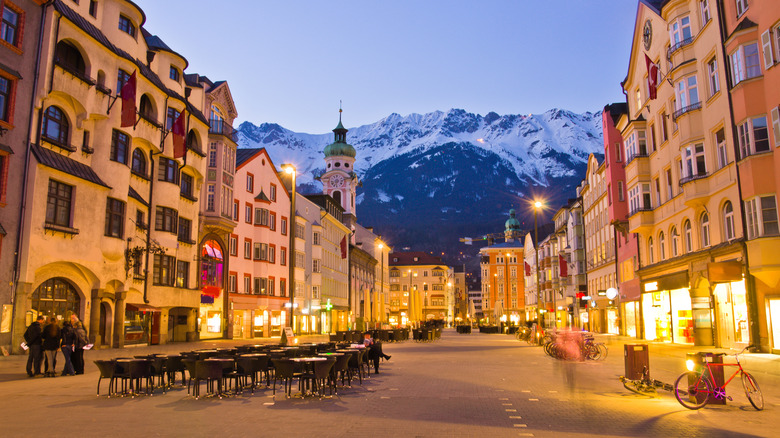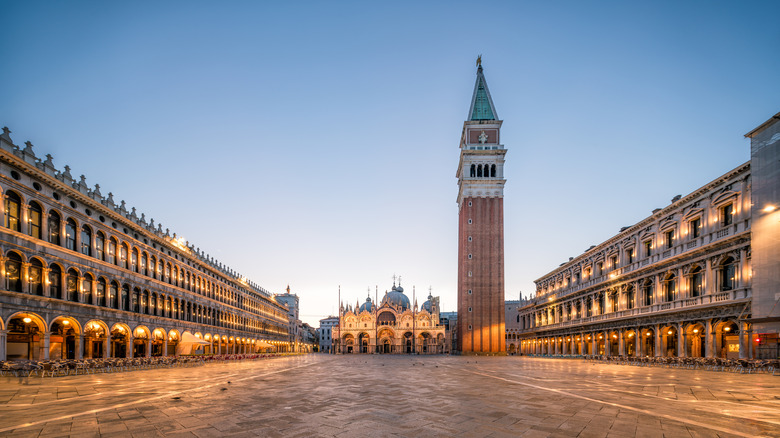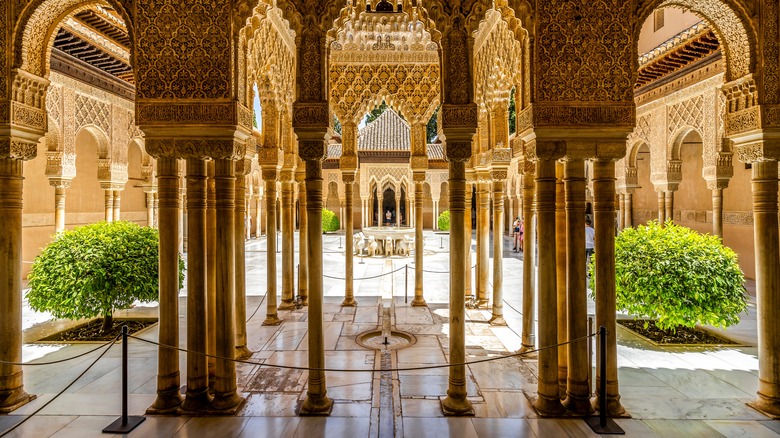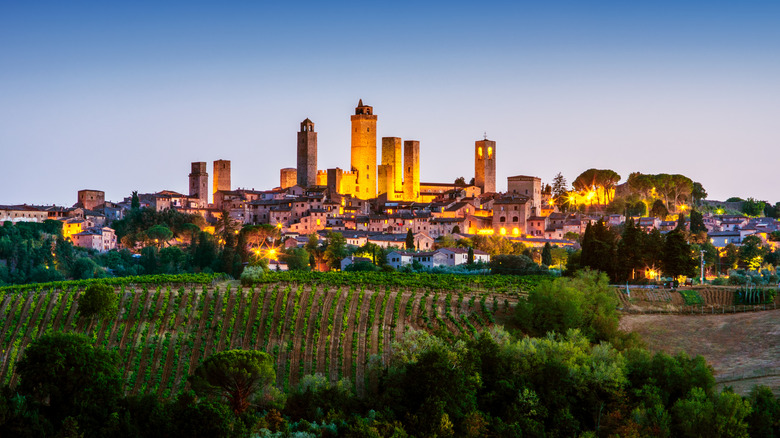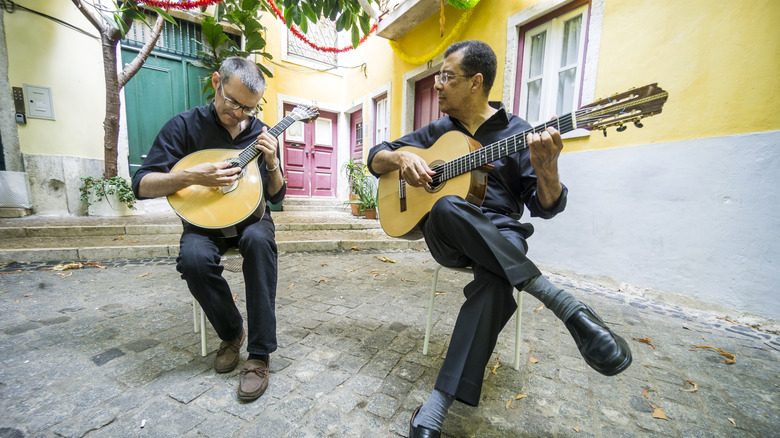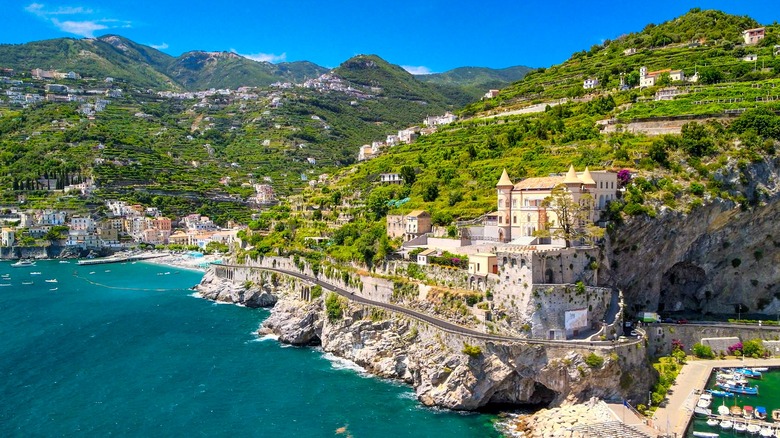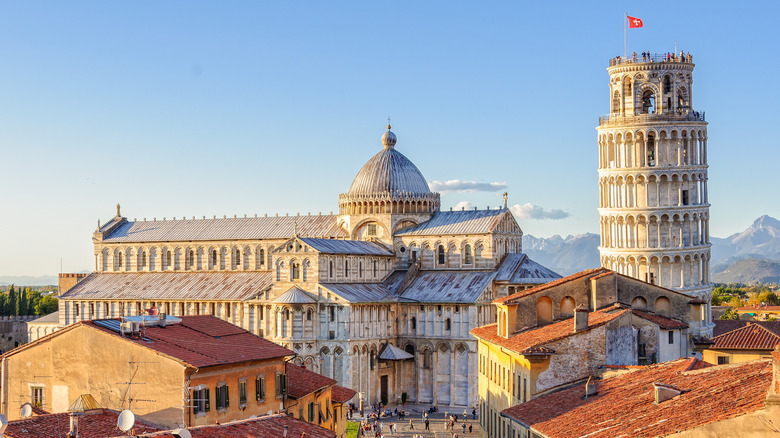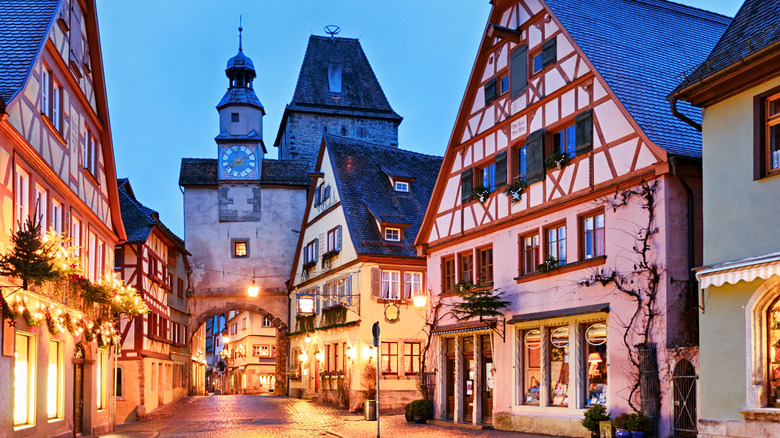So-Called 'Tourist Traps' That Rick Steves Loves
Not all tourist traps are created equal. Sometimes you can have a blast visiting an extra-touristy place, too. While hot spots like the Amalfi Coast, Venice, or Toledo may be filled with tourist trap attractions and restaurants, these destinations are still among the most beautiful in the world. Listening to the advice of travel experts like Rick Steves will help you organize your trip in the most enjoyable manner — no matter how big the crowds are.
The American TV show host and author is well-known for his love of underdog destinations and under-the-radar places. Still, there are uber-popular European getaways that Rick Steves loves despite all the shortcomings of overtourism. At the end of the day, it's not so much about where you go as it is about how you plan your time there. Let's embark on this grand tour of European destinations that often get described as "tourist traps," with Rick Steves as a guide.
Salzburg, Austria
An ultimate stunner, Salzburg is among the most walkable and history-filled European cities. Baroque architecture is everywhere you look, the epic 900-year-old Hohensalzburg Fortress towers over the city, and Alpine peaks provide an ultra-cinematic background. Also, Salzburg is the birthplace of Mozart and the primary filming location for the 1965 Julie Andrews-led movie The Sound of Music. When you've got so much beauty, people will flock to enjoy it. "I love this city, but it's overrun with tourists," concludes Steves before adding that he chooses to "celebrate" them rather than complain.
In the case of Salzburg, the crowds are justified, and instead of fighting it, the best way is to embrace the touristy side. That in no way means that you should succumb to the tourist traps of the Old Town. Whether it's the Mozart pilgrimage or visiting the Sound of Music, have a clear plan of places you're going to (preferably with prices), always check the menu before ordering at the pubs and restaurants in the city center, and be sure to venture outside of the touristy Altstadt to get a true picture of the town.
Hallstatt, Austria
There's hardly a dreamier village in the world than Hallstatt. Hugged by the crystal-clear waters of Hallstätter See and dramatically placed against an alpine backdrop, it's a photogenic delight, with its 18th-century stone Evangelical Church and streets filled with fairytale-like colored houses. Moreover, Hallstatt also boasts the oldest salt mine in the world. No wonder tourists want to see these shores, the scenery is irresistible. The surge of popularity of Hallstatt is so big that in 2023, locals blocked the tunnel leading to the village, demanding caps on daily visits.
Rick Steves writes about Hallstatt as a more peaceful alternative to Salzburg. The host recommends spending a night to fully escape the crowds. With the majority of visitors being day-trippers, staying overnight will allow you to immerse yourself better in the joys of alpine living, greet the spectacular sunrises over the lake, and have a village largely to yourself when the main visitors have boarded their tour buses and left. Hallstatt is also a getaway to the stunning Dachstein Mountains with plenty of hiking and cycling trails.
Toledo, Spain
Proximity to Madrid and easy access by train and bus make historic Toledo a prime day trip destination from the Spanish capital. This, in turn, casts a "day trip curse" on the town. Think overpriced, inauthentic restaurants and tacky souvenir stalls on narrow, crowded streets. And while the tourist trap qualities are certainly there, Toledo is a gem of a town that deserves every visitor it gets. Occupying a hill over the Tagus River, it lures you with an amalgam of cultures, the mighty Alcázar of Toledo, and marvelous architecture everywhere you look.
Rick Steves admits that Toledo is "mobbed by day-trippers" and advises to stay for the night to see how "the real Toledo emerges." Thankfully, this town surely knows how to keep you busy throughout the day, and it's a treasure trove of world-class attractions. Step inside the gorgeous High Gothic Toledo Cathedral to witness the works of El Greco, Goya, Titian, and more. Get lost in the maze of twisted streets filled with old churches, mosques, and synagogues. Don't forget to try the marzipan (or mazapán de Toledo); the sweet treat has been produced here since the 16th century and enjoys EU protection.
Cinque Terre, Italy
Four million. That is the number of visitors the UNESCO-protected Cinque Terre National Park received in 2023. The five dramatically perched villages on Italy's Ligurian coast are among the most alluring European attractions. Car-free, reached only by train and connected by an epic hiking trail with spectacular coastline views, Cinque Terre gets incredibly crowded during the high season. The tourist trap restaurants prey on visitors on the narrow streets and sea-facing piazzas of the tiny villages, making people spend more on less than authentic cuisine. But Cinque Terre remains a stronghold of tradition, a place to "inhale slower-paced Italian culture in perhaps its purest form," per Steves.
The travel guru is a passionate admirer of the national park, and Vernazza is among his favorite European beach getaways. Steves enjoys what is known as "la vita pigra di Vernazza" (or the lazy life of Vernazza). That includes sipping gelato on the bench while people-watching, taking long passegiatas (serene strolls), admiring the craggy coast and infinite Liguarian blue, and tasting locally-produced wine on scenic restaurant terraces. Just stay overnight to experience the peaceful Cinque Terre without the day trippers.
Capri, Italy
Sublime is a good word to describe Capri. Rising from the azure waters of the Bay of Naples, its high white rocks, scattered Roman villa ruins, exclusive resorts, and picture-perfect panoramas make it a sought-after bucket list destination. This island is the full package, unapologetically cinematic and utterly beautiful, but there's another, more unflattering side to Capri. Rick Steves calls Capri a "world-class tourist trap" due to astronomical prices, hordes of day-trippers during the summer months, and the rushed atmosphere on the ground. Still, there's so much to love here, and visiting outside the high-season craze will allow you to encounter a blissful island escape.
Rick Steves suggests a boat tour around the island for the best sightseeing. Go to the Blue Grotto, too; it's among the most striking sea caves in the world for a reason. You can also visit Grotta Bianca (or the White Cave) as an alternative, with its limestone glory and dramatic coastline views. To save money on accommodation instead of uber-expensive hotels in Capri town, opt for the better-priced B&Bs in Anacapri. And certainly don't eat at the tourist trap restaurants next to the port of Marina Grande — choose the places outside the popular areas for authentic gastronomy.
The Black Forest, Germany
Spanning over 2,320 square miles in the southeast German state of Baden-Württemberg, the Black Forest has space for everyone to enjoy its green delights. Here, thick woods meet idyllic valleys, the mountain ranges rise over the quaint towns, and the rivers create idly saunter by — heaven for anyone looking for a natural escape. However, it is also among Germany's biggest tourist traps, according to Rick Steves. But worry not; that status primarily applies to the spa town called Titisee, which is packed with tacky memorabilia stores, tourist crowds, and all things cliché. Steves loves the other parts of the Black Forest, untouched and fresh air-filled.
The best way to experience the blissful side of this region is by venturing into the countryside and exploring the sleepy, small towns. Steves recommends the spa town of Wolfach as a must for any Black Forest itinerary. It boasts a picturesque cafe-dotted market street, a logging history museum in the castle, and excellent access to hiking trails. The TV host also advises trying the Black Forest cake, a mouthwatering local dessert made of dark chocolate and finessed with cherry filling.
Innsbruck, Austria
Although it may be "tourist-filled," as Rick Steves writes in one article, and an "overrated tourist trap" in another blog post, the TV host still finds Innsbruck filled with medieval charm and beauty. The town's location is majestic, and the high Alps are everywhere, allowing visitors to enjoy stunning panoramas. The Nordkette cable car is located within the city limits, enabling you to have breakfast on the gorgeous Main Square in the morning and then an alpine lunch at 2,256 meters, marveling at the view of Innsbruck from the top. Such accessibility is a major draw of Austria's fifth-biggest city.
Innsbruck is an ideal place for an easygoing alpine vacation. Visitors are often amazed by the breathtaking Baroque interiors of the old churches, the charming provincial museums (like the Tyrolean Folk Art Museum that Rick Steves visited for the Innsbruck episode, available on YouTube), and tasting hearty Tyrolean cuisine. Don't miss the crumbly nut strudel at Strudelcafé Kröll, have a bite of Graukäse (local grey cheese), and munch on soul food staple Tiroler Gröstl (a fried mix of bacon, onion and potato with egg on top).
Venice, Italy
For Steves, Venice is a tale of two cities. One is "garishly touristic," as the TV host writes. It's the overpriced St. Mark's Square restaurants, rip-off souvenirs produced a thousand miles away, crowds invading the narrow bridges, daytrippers providing nothing to the local economy, and selfies, selfies everywhere. It's a tale of a fragile urban ecosystem pushed to the limits of its capabilities where tourists are not welcome anymore.
Yet, worry not, another Venice exists. Rick Steves promotes the "romantic and tranquil" side of the city that you can encounter by booking an overnight stay and getting off the beaten path. Early morning and late evening see La Serenissima at its most sublime, as the pathways become deserted, the canals exude stillness, and the boats peacefully sway to the rhythm of unhurried lagoon waves. That's exactly the kind of Venice you should aim to discover. And don't forget to check out the under-the-radar lagoon islands like Giudecca with white marble Santissimo Redentore Church, San Giorgio Maggiore with spectacular Venice views, and luscious Lido, representing the classic Italian Adriatic resort experience.
Granada, Spain
It's very easy to fall for Granada. This Andalusian town is constantly buzzing with excitement, offers some of Europe's most impressive architectural masterpieces, and greets you with an enticing mixture of Christian and Moorish civilizations. Coming here, you are immersed in a universe of easygoingness filled with the sounds of street musicians, lively conversations coming from the many terraces on the many plazas, and the excitement of impromptu street parties. Sure, there are numerous tourist traps here and there, but they all weave seamlessly into the overall vibe. Just steer clear of restaurants next to the monuments, don't buy from street souvenir vendors, and purchase tickets for attractions from authorized sellers.
The Alhambra, a magnificent UNESCO-protected Moorish fortress, is the undeniable centerpiece of Granada. Book your tickets beforehand to get in; the entry slots are limited, and you risk missing an opportunity to see a true triumph of ninth-century engineering. The Rennaissance Catedral de Granada is another must, guaranteed to take your breath away with its exquisite interiors. And take a peek inside the Alcaicería covered market. Steves sums it up well, saying that "it's a tourist trap today, but this colorful mesh of shopping lanes and overpriced trinkets is still fun to explore."
San Gimignano, Italy
San Gimignano is the original Manhattan of the ancient world. At the height of its power during medieval times, this Tuscan town boasted 72 so-called tower houses – erecting one was a show of wealth for local patrician families. Even though only 14 towers lived to see the 21st century, San Gimignano epitomizes Italian architectural genius. The town is a time capsule, as the whole historic core has been left largely intact throughout the centuries. As an authentic Tuscan gem, it also receives loads of tourists who mostly come here for day trips.
"Despite its tourist-trap feel, it's still worth slotting into your Italian itinerary," says Steves, who suggests staying overnight for a special romantic experience. As with other popular small towns around Europe, the magic returns once the daytrippers disappear. Visitors stay among the wonderful rolling hills, olive groves, and wineries of the region, a perfect recipe for a high-quality slow travel holiday.
Fado in Lisbon, Portugal
Fado is not just a Portuguese musical genre that originated in Lisbon in the 19th century — it is a way of life. Unfortunately, today, if a destination is famous as a "birthplace" of something, the inauthentic, tacky, overpriced "experiences" start to pop up around the most popular areas, promising authenticity and only deceiving in the end. That's the case in the Portuguese capital. According to Steves, attending a fado concert has become "one of Lisbon's favorite late-night tourist traps." The worst-case scenario here is listening to a mediocre, uninspired performance with a disinterested audience that includes zero locals eating food that costs much more than it should.
But how do you find a fantastic establishment that plays authentic fado? Your first option is to visit the interactive Fado Museum, which fully immerses you in the history and modernity of this fascinating music genre. The Alfama district (behind the museum) is filled with tiny, casual bars where you can stumble upon a genuine fado performance and have a fantastic Portuguese meal to accompany it.
Amalfi Coast, Italy
"Amalfi Coast towns are pretty but touristy, congested, overpriced," laments Rick Steves, yet he seems to love it there and features this alluring part of Italy among his all-time favorite European beachside hideaways. There's no mystery here; the Amalfi Coast is stunning, and nothing can prepare you for seeing this crescendo of natural beauty for the first time. Cascading towns challenge the rules of engineering, ultra-narrow roads offer head-turning vistas with every curve, and the Tyrrhenian Sea glistens under the blissful sun.
But with all its merits, the Amalfi Coast can make your holiday miserable very quickly. More accurately, its minefield of tourist traps can be a challenge for unprepared travelers. That's why it's important to do your homework before coming here. Research restaurant prices beforehand, spend extra time to find the most suitable accommodation, choose times outside of peak hours for commuting, and keep in mind the challenging geography when arriving in a rented car.
Pisa, Italy
Is there anything more quintessentially touristic than the Leaning Tower of Pisa? While it's extremely easy to write it off as a tourist trap, this destination may be among the most misunderstood in Italy. Many come here for the tower, snap a few Instagram pictures in various poses, maybe buy a kitschy mini version for the fridge, and leave. Those who stay overnight in Pisa will have a chance to experience a gorgeous Tuscan city with several aces up its sleeve regarding history, architecture, and, of course, food. And in contrast to the leaning white monument, the town itself will be "virtually tourist-free," according to Rick Steves.
Once you have more time on your hands as an overnight visitor, take a closer look at the sprawling Piazza dei Miracoli, which includes the gorgeous Romanesque Duomo, the biggest Baptistry building in Italy, and the tranquil Camposanto Monumentale cemetery. Venture inside Pisa proper to see the palazzos along the romantic banks of the Arno River, explore the superb Rennaissance Cavalieri Square, and admire Keith Harring's masterful pop art "Tuttomondo," painted on the facade of Sant'Antonio Abate church.
Rothenburg ob der Tauber, Germany
"Even with crowds, overpriced souvenirs, and a nearly inedible pastry specialty (the over-promoted, fried ball of pie crust called a Schneeball), Rothenburg is still the best," opines Steves about one of his favorite towns in Germany. Set in the Bavarian region of Middle Franconia, it's a medieval open-air museum of a town. Only the payment terminals at the local cafes and the selfie-taking mobile phones of thousands of tourists give hints that we are in the 21st century. Rothenburg is a lesson in preserving a medieval city core that manages to be both overly touristy and super cute simultaneously.
The town is quite special for Rick Steves, as the TV host fell for its quaint charms during a backpacking trip in his youth. Back then, it was a largely undiscovered part of Germany. Today, Rothenburg attracts more than 2 million visitors yearly (with daytrippers making up the majority). As with other small gems, Rick Steves' best advice to avoid crowds is to book a room and spend the night. This way, you will enjoy the picture-perfect beauty of Rothenburg to yourself in the evening and witness the sleepy town wake up with a coffee cup in hand in the morning.
